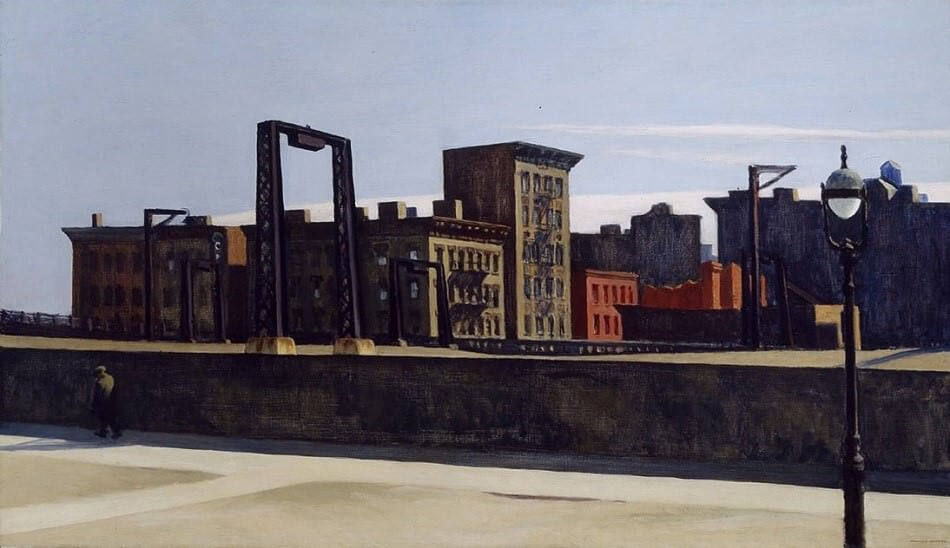Interlude - Edward Hopper at the Addison Gallery of American Art
Manhattan Bridge Loop (1928) is a depiction of urban alienation and loneliness by the 20th century’s master of the form. Edward Hopper is a poet of the manmade: the cornices and fire escapes, the iron scaffolds, the brick and concrete, all lividly real to the viewer. By contrast, his clumsy, solitary figures, faces turned away from us and each other, are touchingly adrift in these spaces.
In this painting, the awesome scope of the bridge’s approach dominates - a great grey-black slash, cutting the lemony asphalt below off from the thin blue sky above. The sole pedestrian to the left is almost entirely silhouetted, a single shaft of light stretching across his back. There’s a heavy psychological weight to these buildings, handsome as they are, glowing in the sun.

The titular bridge itself was opened a couple of decades before Hopper painted it. Manhattan Bridge is a wonder of industrial efficiency and progress, easing a bottleneck of people and commerce by providing a new link to the outer boroughs. But the man in the painting isn’t too thrilled by it, face downcast as he skulks in the shadow of the elevated trolley tracks. He has a place to go - away from our prying eyes.
On the face of it, what better artist than Hopper to turn to in these lockdown times? There’s an eerie stillness to this scene, and so many others from the artist, that does resemble the near-silent London streets I pedal through each day, out on my bike for my government-mandated exercise.
But overall, life doesn’t feel Hopper-ish at the moment. Maybe it’s because our loneliness is imposed on us, for want of an alternative. With Hopper, you always have the sense that his lonely subjects have the luxury of choosing their solitary fates. There are crowds all around that they have decided not to join.
Consider Hopper’s own description of the painting: “The very long horizontal shape of this picture . . . is an effort to give the sensation of great lateral extent. Carrying the main horizontal lines of the design with little interruption to the edges of the picture is to enforce this idea and to make one conscious of the spaces and elements beyond the limits of the scene itself.”
Elements like: the busy city. Movement. Other people. It’s all right there, just slightly out of frame.
Manhattan Bridge Loop is in the permanent collection at the Addison Gallery of American Art, Phillips Academy, Andover